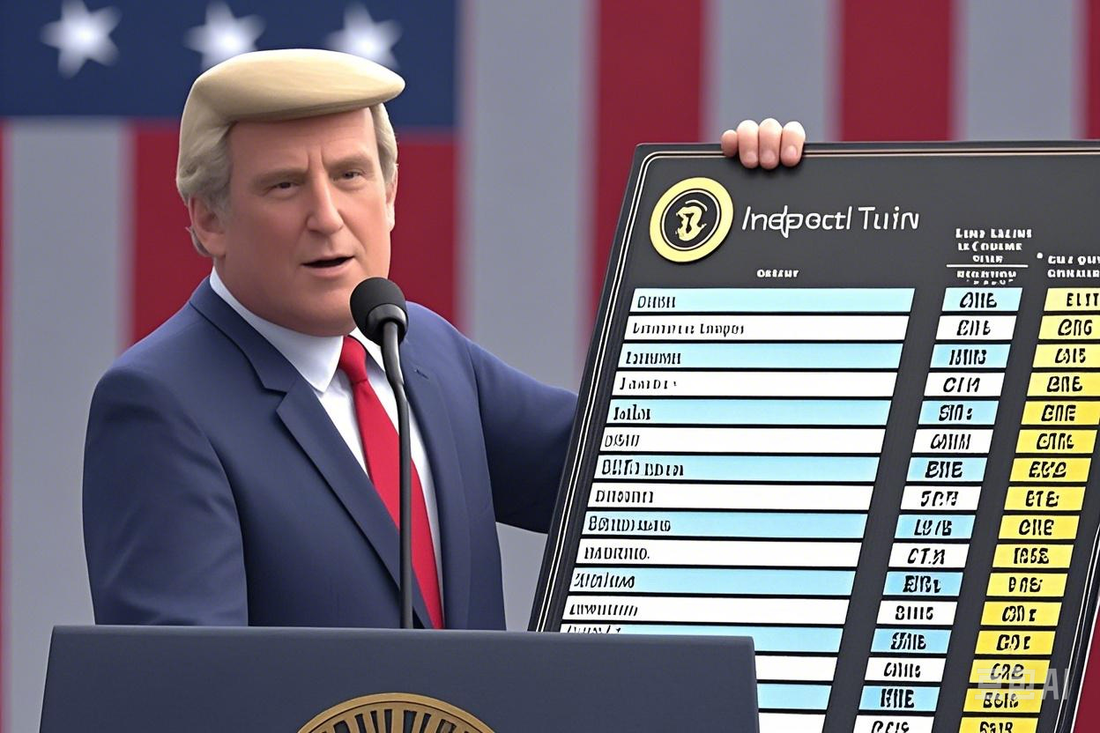
Understanding Trump's Trade War with China: 12 Economic Terms You Need to Know
Share
The trade war between the US and China can seem complex, but understanding a few key economic terms can make it much clearer. Here's a breakdown of 12 essential concepts, explained in plain language:
1. Tariffs: What are they?
- Definition: Taxes on imported goods.
- In Simple Terms: Imagine a fee added to the price of something you buy from another country. This makes those imported goods more expensive.
- Recent Example: The US increasing tariffs on Chinese electronics, making them pricier for American consumers.
2. Retaliatory Tariffs: What happens when countries fight back?
- Definition: Tariffs imposed in response to another country's tariffs.
- In Simple Terms: If Country A puts a tax on Country B's goods, Country B might put a tax on Country A's goods in return.
- Recent Example: China placing tariffs on American agricultural products after the US increased tariffs on Chinese goods.
3. Trade War: What does it mean?
- Definition: An economic conflict involving escalating trade barriers.
- In Simple Terms: When countries keep raising taxes on each other's goods, it hurts both economies.
- Recent Example: The ongoing back-and-forth tariff increases between the US and China.
4. Trade Deficit: Is it always bad?
- Definition: When a country imports more than it exports.
- In Simple Terms: Buying more stuff from other countries than you sell to them.
- Recent Example: The US has a trade deficit with China, meaning it buys more Chinese goods than it sells to China.
5. Reciprocal Tariffs: A tit-for-tat approach
- Definition: Tariffs imposed at the same rate as those imposed by another country.
- In Simple Terms: If they put a 25% tax on our goods, we put a 25% tax on theirs.
- Recent Example: The idea that tariffs should be matched between the US and China.
6. Non-Tariff Barriers: More than just taxes
- Definition: Trade restrictions that aren't tariffs, like quotas or regulations.
- In Simple Terms: Other ways to make it harder to trade, like limiting how much can be imported.
- Recent Example: China restricting Hollywood movie imports or the return of Boeing airplanes.
7. Global Supply Chains: Why everything is connected
- Definition: The network of companies involved in making and selling products worldwide.
- In Simple Terms: Products often have parts made in many different countries. Tariffs disrupt this.
- Recent Example: Tariffs impacting the production of electronics, which often rely on parts from multiple countries.
8. Inflation: How tariffs affect prices
- Definition: A general rise in prices.
- In Simple Terms: Tariffs can make imported goods more expensive, which can raise prices for everyone.
- Recent Example: Increased costs for consumers due to tariffs on imported goods.
9. Economic Decoupling: Breaking up economic ties
- Definition: Reducing economic interdependence between countries.
- In Simple Terms: Countries trying to rely less on each other for trade and investment.
- Recent Example: The US and China discussing ways to reduce their economic reliance on each other.
10. Dumping: Selling goods below cost
- Definition: Selling goods in a foreign market below their production cost.
- In Simple Terms: Selling products for less than they cost to make, to gain market share.
- Recent Example: Concerns from the EU about China dumping products into their markets.
11. Critical Minerals: The new battleground
- Definition: Raw materials essential for industries like tech and renewable energy.
- In Simple Terms: Elements needed to make things like batteries and electronics.
- Recent Example: China limiting the export of some critical minerals, impacting global manufacturing.
12. Market Diversification: Not putting all your eggs in one basket
- Definition: Expanding trade relationships with a wider range of countries.
- In Simple Terms: Trading with many different countries, so you're not too reliant on just one.
- Recent Example: Countries seeking new trade partners to reduce their dependence on China.







